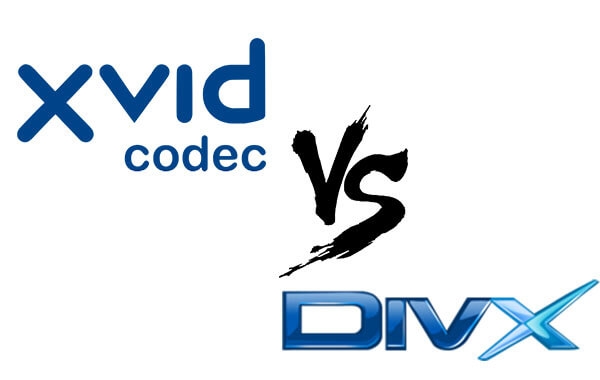A Complete & Fast Guide: How to Start a Photography Company
Starting a photography company can be an exciting and fulfilling journey. If you have a passion for capturing moments through your lens, transforming that passion into a business can lead to a rewarding career. In this comprehensive guide, we'll explore the essential steps to starting a photography company, from defining your niche to marketing your services effectively.
The photography industry has evolved significantly in recent years. With the rise of social media and digital platforms, the demand for professional photography is at an all-time high. Whether you aspire to be a wedding photographer, a portrait artist, or a commercial shooter, understanding the foundational steps to launch your business is crucial.
1. Define Your Photography Niche
Understanding Niches
The first step in starting your photography company is to identify your niche. A niche helps you focus your marketing efforts and attract the right clients. Common photography niches include:
- Wedding Photography: Capturing the joy and beauty of weddings.
- Portrait Photography: Creating stunning portraits of individuals, families, or pets.
- Commercial Photography: Working with businesses to create promotional images for products or services.
- Travel Photography: Documenting your travels and selling those images to publications or online platforms.
- Food Photography: Showcasing culinary creations for restaurants, cookbooks, or culinary brands.
Choosing Your Niche
To define your niche, consider your interests, skills, and the types of photography that excite you. Ask yourself:
- What subjects am I passionate about?
- Who would my ideal clients be?
- What types of photography are in demand in my area?
Having a clear niche helps you build a strong brand identity and positions you as a specialist, making it easier to market your services effectively.

2. Conduct Market Research
Analyzing Competitors
Once you've chosen your niche, it's essential to conduct thorough market research. Start by analyzing your competitors. Look at their websites, social media profiles, and customer reviews. Take note of their strengths and weaknesses, and identify what makes them successful.
Identifying Trends
Use tools like Google Trends, industry reports, and social media insights to keep up with photography trends. Understanding what clients are looking for can help you tailor your services to meet their needs. Consider:
- What are the current trends in photography?
- What styles or techniques are becoming popular?
- What are clients willing to pay for specific services?
3. Create a Solid Business Plan
Key Components
A business plan acts as a roadmap for your photography company. It outlines your goals, strategies, and the steps you need to take to achieve success. Key components to include in your business plan are:
- Mission Statement: Define your purpose and what you aim to achieve with your photography company.
- Market Analysis: Detail your findings from market research, including competitor insights and target audience demographics.
- Services Offered: List the photography services you will provide, along with pricing and any packages available.
- Marketing Strategy: Outline how you plan to attract clients, including both online and offline strategies.
Financial Projections
Include financial projections that outline your expected income, expenses, and potential profits. This step is particularly important if you intend to seek funding or investment. Consider:
- Startup costs (equipment, marketing, website, etc.)
- Ongoing operational expenses (insurance, software, etc.)
- Pricing strategies and expected revenue based on your services
4. Choose a Memorable Business Name
Brainstorming Ideas
Your business name should reflect your style and the services you offer. When brainstorming, consider names that are easy to remember, spell, and pronounce. Think about incorporating terms related to your niche or your own name.
Checking Availability
Before settling on a name, check its availability as a domain and on social media platforms. Consistency across your branding is crucial for establishing a professional image. Ensure that your chosen name is unique and not trademarked by another business.

5. Legally Establish Your Business
Business Structure
Decide on a business structure that best suits your needs. Common options include:
- Sole Proprietorship: Easiest to set up, but offers no personal liability protection.
- Limited Liability Company (LLC): Provides personal liability protection and can be advantageous for tax purposes.
- Corporation: More complex to set up, but offers the most protection from personal liability.
Registering Your Business
Register your business according to your state's requirements. This may involve obtaining a business license, an Employer Identification Number (EIN), and understanding sales tax obligations. Check with your local government for specific requirements.
6. Invest in Essential Equipment
Basic Gear Needed
Investing in quality equipment is crucial for delivering professional results. Essential gear includes:
- Camera: A good DSLR or mirrorless camera that fits your niche.
- Lenses: A variety of lenses for different types of photography (e.g., prime lenses for portraits, wide-angle for landscapes).
- Lighting: External flashes or softboxes to enhance your indoor shots and control lighting conditions.
- Tripod: A sturdy tripod for stability, especially in low-light conditions.
- Editing Software: Tools like Hitpaw Fotorpea and Photoshop for post-processing your images.
Budgeting for Equipment
Start with a budget. You don't need the most expensive gear right away; focus on getting quality equipment that meets your current needs. Consider renting equipment initially or buying used gear to save on costs.
7. Build a Professional Portfolio
Showcasing Your Work
A portfolio is your visual resume. Start building it by photographing friends and family or offering discounted sessions to gain experience. This will help you create a diverse collection of images that showcase your style and skills.
Online Presence
Create an online portfolio on your website to attract potential clients. Ensure your website is easy to navigate and highlights your best work, services offered, and contact information. Include client testimonials to enhance credibility.

8. Create a Stunning Website
Key Elements of a Photography Website
Your website should convey professionalism and creativity. Key elements to include:
- Portfolio: Showcase your best images in a well-organized gallery.
- About Page: Share your story, experience, and what makes you unique.
- Services Page: Clearly outline the services you offer and their pricing, including any packages or special deals.
- Contact Information: Make it easy for potential clients to reach you through a contact form or email.
SEO Optimization
Optimize your website for search engines by using relevant keywords in your content, meta descriptions, and image alt tags. This will help improve your visibility on Google. Regularly update your blog with photography tips, client stories, and behind-the-scenes content to keep your site fresh and engaging.
9. Utilize Social Media for Marketing
Building Your Presence
Social media is a powerful tool for photographers. Use platforms like Instagram, Facebook, and Pinterest to showcase your work and connect with potential clients. Here are some tips:
- Post Regularly: Share high-quality images consistently to keep your audience engaged.
- Engage with Followers: Respond to comments and messages to build relationships and community.
- Use Hashtags: Utilize relevant hashtags to reach a broader audience and attract followers in your niche.
Showcasing Your Style
Share behind-the-scenes content, editing processes, and client testimonials. This not only showcases your work but also helps potential clients connect with you on a personal level. Consider creating Instagram Stories or Reels to engage your audience further.
10. Experiment with Advertising
Running Targeted Ads
Consider using paid advertising to boost your visibility. Platforms like Google Ads and Facebook Ads allow you to target specific demographics based on location, interests, and behaviors. Create visually appealing ads that highlight your best work and include a strong call to action.
Monitoring Performance
Track your ad performance to see what works best. Adjust your strategies based on the results to maximize your return on investment. Use analytics tools to monitor traffic to your website and engagement on your social media posts.

11. Network and Build Client Relationships
Importance of Networking
Networking is crucial in the photography industry. Attend local events, workshops, and expos to connect with other photographers and potential clients. Join photography groups on social media or local photography clubs to expand your network.
Delivering Exceptional Service
Focus on providing a memorable experience for your clients. Exceptional service leads to referrals and repeat business. Ask satisfied clients for testimonials and encourage them to share their experiences on social media. Consider following up after shoots with a thank-you note or email.
12. Create Contracts and Pricing Packages
Importance of Contracts
Contracts protect your business and clarify expectations with clients. Ensure your contracts include:
- Services Provided: Outline what the client can expect, including the type of photography, hours of coverage, and final deliverables.
- Pricing: Clearly state your fees, any required deposits, and payment terms.
- Cancellation Policies: Include terms for rescheduling or canceling, along with any associated fees.
- Rights and Usage: Clarify copyright ownership and usage rights for both parties.
Developing Pricing Packages
Consider creating pricing packages that cater to different client needs. This makes it easier for potential clients to choose a package that fits their budget and requirements. Offer a range of services, from basic packages to premium options with added features like albums or prints.
13. Continuously Learn and Improve
Ongoing Education
Photography is an ever-evolving field. Stay updated with trends and techniques by taking online courses, attending workshops, and joining photography forums. Learn about new equipment, editing software updates, and marketing strategies.
Seeking Feedback
Regularly seek feedback from clients and peers. Constructive criticism can help you improve your skills and service. Consider participating in photography critiques or joining groups where you can share your work and receive input.
Conclusion
Starting a photography company requires passion, dedication, and a clear plan. By defining your niche, conducting thorough market research, and building a strong online presence, you can create a successful photography business. Remember, the journey may have its challenges, but with determination and creativity, you can turn your passion for photography into a thriving career.
FAQS
Q1. How much does it cost to start a photography company?
A1. Starting a photography business can cost anywhere from $1,000 to $10,000 or more, depending on your equipment and setup. At a minimum, you'll need a camera, lenses, tripod, memory cards, editing software, and basic marketing materials. Additional expenses may include a website, insurance, business licenses, and studio space if needed. Starting small and upgrading gear as you grow is a common approach for new photographers.
Q2. Is a photography business profitable?
A2. Yes,a photography business can be very profitable with the right strategy. Profitability depends on your niche, pricing, marketing, and client base. Many full-time photographers earn $40,000 to over $100,000 annually, especially in high-demand niches like weddings, portraits, and commercial photography. Keeping expenses low and offering upsells (like prints or albums) can significantly increase profits.
Q3. What type of photography is most in demand?
A3.
Some of the most in-demand photography niches include:Wedding photography - High-ticket and year-round demand
Demand can vary by location, so research your local market to find the best fit.










 HitPaw Univd (Video Converter)
HitPaw Univd (Video Converter) HitPaw VoicePea
HitPaw VoicePea  HitPaw VikPea (Video Enhancer)
HitPaw VikPea (Video Enhancer)



Share this article:
Select the product rating:
Daniel Walker
Editor-in-Chief
This post was written by Editor Daniel Walker whose passion lies in bridging the gap between cutting-edge technology and everyday creativity. The content he created inspires the audience to embrace digital tools confidently.
View all ArticlesLeave a Comment
Create your review for HitPaw articles